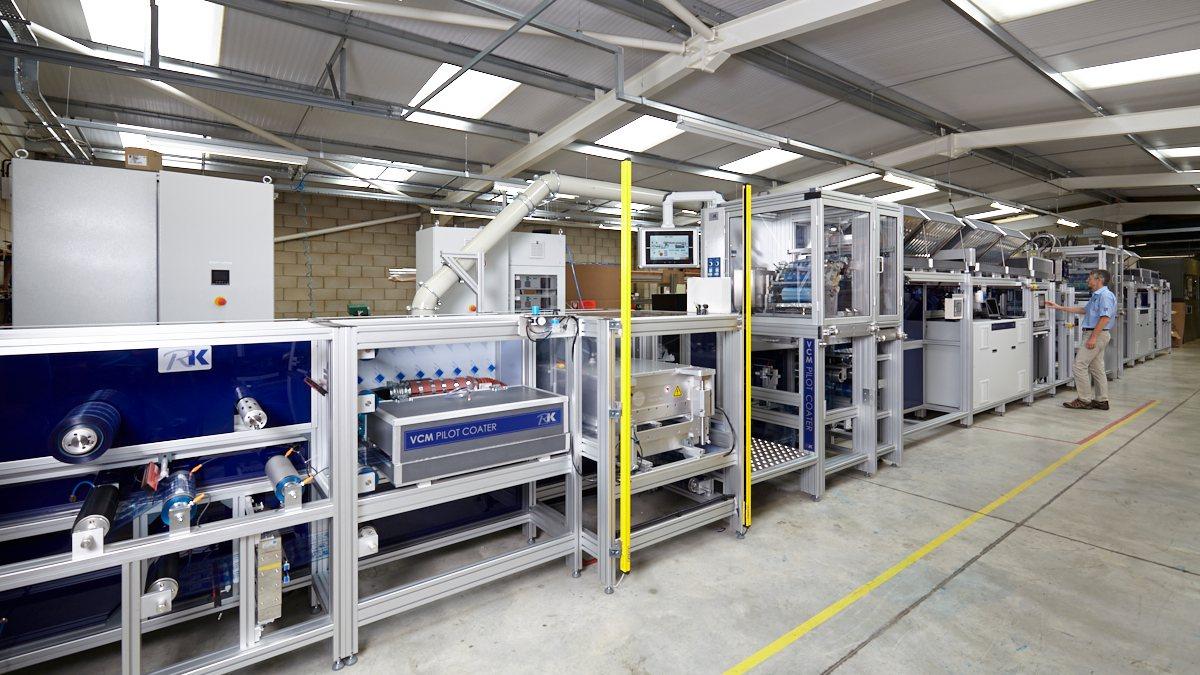Flexible packaging films and papers, bags, pouches, labels and much more besides all have one thing in common: their processing life begins on a roll. The converter adds value by printing, shaping, stamping, slitting, forming, folding, sealing, and, of course, by coating and laminating. At each processing stage, the aim is to maintain processing integrity without any complications so that a saleable product can be delivered to the customer in the fastest possible time and with minimal waste
Many web products, such as tape and label,s are coated with an adhesive. In order to use them, they must meet a number of conflicting requirements. To begin with, the layers containing the adhesive must peel easily from the unwinding roll. However, the application requirements dictate that the product sticks aggressively enough so that it cannot be removed from the matting surface. The adhesive may need to be tacky or at least not brittle at low temperatures while having adequately high shear strength at high temperatures. The adhesive must have viscosities that are compatible with one or more of the web coating methods.
Winding rolls is not always straightforward!
To the uninitiated, the process of producing/processing and winding rolls may seem straightforward, but this is not always the case. Rolls of adhesive-coated material might be wound with straight edges, but later these rolls may telescope sideways. Rolls may also be prone to going egg-shaped when core supported when stored or when being handled.
Rolls must be wound with the right degree of tension. As the roll winds up, tension builds inside the roll. If these stresses become greater as the roll is wound, then the inner wrap towards the core will loosen and may result in telescoping when being handled. While many products with high levels of interlayer friction are prone to slippage, even when they possess a low coefficient of friction, wound care adhesive products can be particularly susceptible to telescoping, for reasons of variation in viscosity due to temperature changes.
Web tension affects so many aspects of machine performance and product quality. Apart from avoiding problems such as telescoping, web tension affects the accuracy and consistency of coating thickness, axial dimensional stability of the web and in the case of printing, print registration.
Coating, especially coating thin onto thin material at high machine speeds, requires care and attention because thinner substrates are inclined to deform and wrinkle far more easily than thicker substrates. With extensible polyolefin materials, lower tension levels and slower machine speeds may be needed to avoid the necking down of the web. A responsive or optimally reactive method of controlling tension potentially makes it easier for the coater to accommodate different webs: thin films & thicker substrates. RK Print Coat Instruments’ bespoke VCM pilot/production coater is equipped with high specification web handling and tension control systems. The framework is sturdily constructed so that if required, the VCM can accommodate heavier gauge substrates. The framework also allows for modification in the future if operational circumstances change.
Exploring new possibilities
Converters must be prepared to explore new possibilities and look beyond the familiar. Markets can change very quickly; one only has to look at the far-reaching changes taking place in packaging as brand owners and customers look towards materials and consumables that are recyclable, sustainable and comply with other circularity requirements.
Day-end production totals are often determined by a variety of factors, some conditioned by the machine itself and by the various elements or suitably configured components that make up the line. Roll handling, web and tension control have been touched upon, but other components: the method of drying/curing and coating applicator are of importance. So too is the method of coating.
A wide range of coating applicator technology, both pre-metered and post-metered, is available for the VCM and the VCML pilot coater. Factors to consider include capital costs, the type of adhesive and desired coat weight required; coating quality; ease of operation, the substrate, the coating mix and the degree of functionality, durability, gloss, chemical resistance and other desirable properties needed.
Written by Tom Kerchiss, Chairman of RK Print Coat Instruments Ltd.

